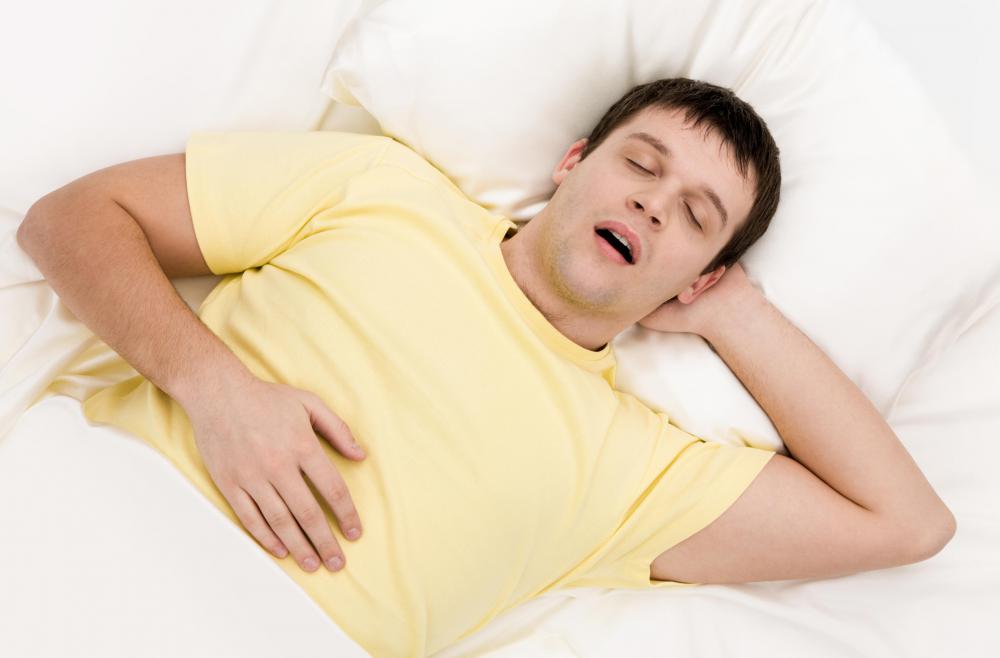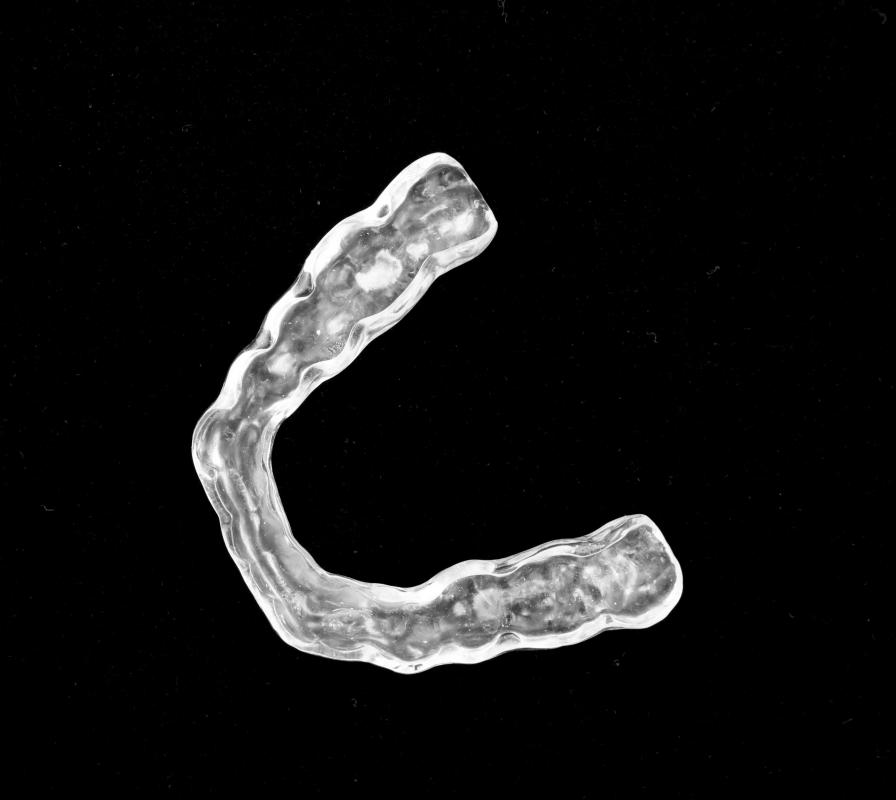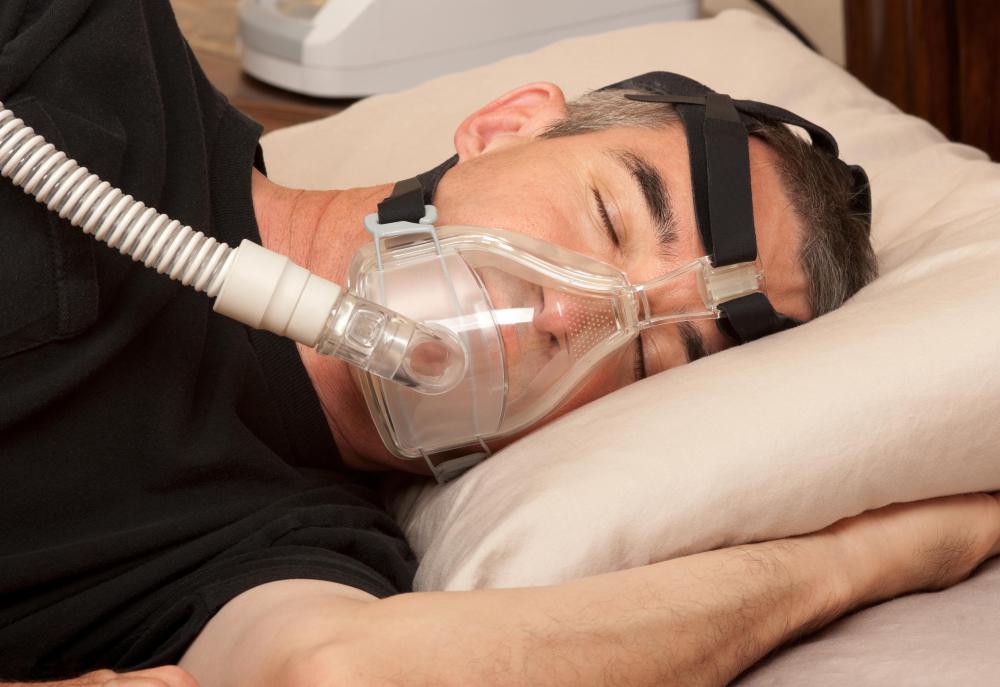At TheHealthBoard, we're committed to delivering accurate, trustworthy information. Our expert-authored content is rigorously fact-checked and sourced from credible authorities. Discover how we uphold the highest standards in providing you with reliable knowledge.
What are the Different Types of Sleep Apnea Devices?
The main types of sleep apnea devices currently available include dental appliances and positive airway pressure (PAP) devices. Generally, all PAP systems include a small machine attached to a tube leading up to an interface; this interface is ordinarily a mask and headgear worn over the face. When turned on, pressurized air pumps up through the tubing and mask into the windpipe to keep the throat open and allow airflow. The main alternative to a PAP system is an oral sleep apnea device. These oral devices are custom fitted to reposition the mouth so the airway stays open.
PAP sleep apnea devices are the most widely used treatment for sleep apnea and are available in several varieties. The continuous positive airway pressure (CPAP) system is the most commonly used PAP device and pushes a constant source of air through the windpipe. Other PAP systems available use similar technology but offer additional features to help address specific issues. For example, Bi-level PAP systems offer two levels of air pressure; a higher level is pumped when the machine senses the user is not breathing well and the air pressure is reduced when normal breathing habits occur. Another example is the Auto CPAP system, a device that automatically adjusts the level of air pressure for each breath taken.

PAP systems are by and large considered to be the gold standard for treatment. The general consensus among health professionals is that these devices can eliminate many of the side effects of sleep apnea, including fatigue. Due to their universal appeal, PAP machines are regularly the only recommendation made to treat individuals suffering from moderate to severe cases of obstructive sleep apnea. In some instances, these sleep apnea devices may also be suitable for the treatment of central sleep apnea.

Despite their glowing endorsement in the medical community, some users find PAP sleep apnea equipment cumbersome and uncomfortable to use. This complaint, however, can usually be addressed by considering the design of the system when purchasing and choosing optional accessories. For instance, if breathing in the cool compressed air is causing a dry throat and nose, an integrated humidifier can be used to warm up the air. Mask discomfort, a common complaint, is often addressable by choosing a different headgear option or a less restrictive mask made with softer materials.

Patients with mild to moderate levels of obstructive sleep apnea may prefer to use dental sleep apnea devices over PAP systems. The majority of oral appliance users will get fitted for a mandibular advancement device (MAD). The MAD looks like a sports mouth guard and works to push the lower jaw forward so the airway cannot close. Although not as widely used, a tongue retraining device, or tongue splint, may also be an option to consider. The splint works to hold the tongue forward so the back of the tongue does not fall against the back of the throat and obstruct the airway.

Oral appliances can be quite useful for those who find CPAP masks to be too restrictive or prefer the portability of oral appliances. Some are also capable of treating sleep apnea and snoring. Ordinarily, the side effects of such devices are mild and could possibly include dry mouth and jaw pain.
In the United States, PAP systems and oral sleep apnea devices are normally only available by prescription. Patients who need a PAP system will generally need to see a sleep doctor. Dental devices will usually require custom fitting by an orthodontist or dentist with sleep apnea experience. Regular monitoring is also typically done to ensure these devices are improving the sleep disorder.
AS FEATURED ON:
AS FEATURED ON:














Discuss this Article
Post your comments